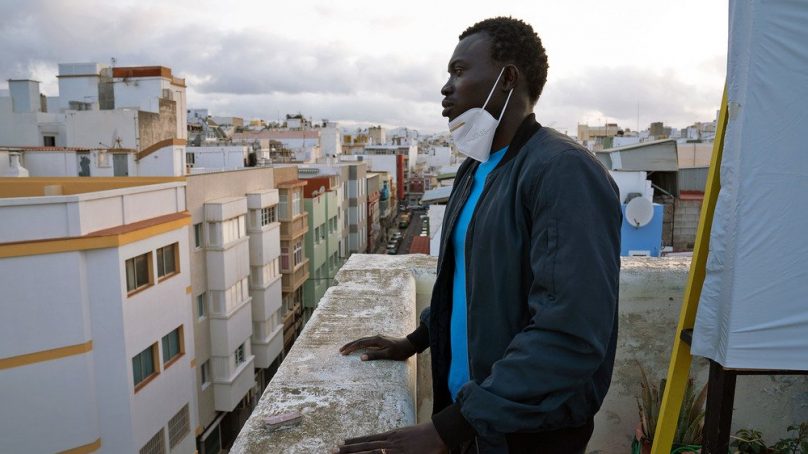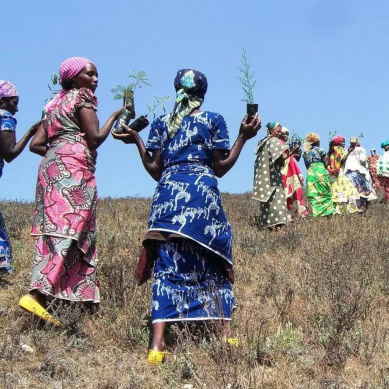
The number of asylum seekers and migrants crossing the treacherous Atlantic maritime route to the Spanish Canary Islands is on track to be the highest annually since 2006. But improvements to the reception system have for the most part averted the sense of crisis and the rise in xenophobia and hate crimes that engulfed the archipelago last year.
The migration season to the Canary Islands is now in full swing, and around 16,800 people – mainly from Morocco, Mali, Senegal, and other West African countries – have already made the journey in 2021: a more than 44 per cent increase compared to the same period last year.
Over 880 people are known to have died attempting the crossing so far this year – surpassing the total for all of 2020 – and more than 1,000 others have potentially perished in so-called invisible shipwrecks.
After the route had been mostly dormant since 2006, more than 23,000 asylum seekers and migrants reached the Canary Islands by boat in 2020 – driven by the economic impacts of the Covid-19 pandemic, pre-existing environmental crises, and an EU-backed crackdown on migration along Morocco’s northern coast.
Movement on the route peaked in October and November last year, with nearly 13,500 people arriving in those two months alone.
This year, arrival numbers are higher overall. But although they’ve been steadily increasing since August – when calmer weather begins to make the crossing less dangerous, through the end of the year – there hasn’t yet been the same sudden spike that occurred in 2020.
The fact that the arrivals have been more spread out has made the situation easier to manage, according to Txema Santana, who works as an immigration adviser to Esther González, vice president of the Canary Islands’ regional government. But the big difference, he said, is the change in approach by Spanish officials. “The response of the Government of Spain has been radically different from last year,” Santana told The New Humanitarian.
Last year’s increase caught officials unprepared. Reception facilities had been dismantled when migration ebbed after 2006. And as arrivals rose in 2020, the authorities quickly ran out of room to house people. At the same time, the Spanish government prevented asylum seekers and migrants from travelling to the mainland, leading to a rapid pile-up.
“The overcrowding generated problems of coexistence,” Juan Carlos Lorenzo, Canary Islands coordinator for the Spanish Commission for Refugee Aid (CEAR), an NGO, told The New Humanitarian. Populist politicians and sensationalist media coverage stoked a sense of crisis, leading to an increase in hostile attitudes towards asylum seekers and migrants and even physical attacks, Lorenzo explained.
Tensions subsided as arrivals declined during the first months of 2021. New reception facilities with more capacity opened in March, and a court ruling in April forced the government to allow some asylum seekers to travel to the mainland.
Now, people are periodically being transferred to the Spanish mainland to prevent overcrowding, the local government has implemented better health protocols to manage arrivals and mitigate the threat of Covid-19, and the economy has started to recover – all of which has helped improve the situation, according to both Santana and Lorenzo.
Human rights organisations, such as CEAR and Amnesty International, say poor management of migration reception contributed to last year’s rise in racist attitudes and even to hate crimes towards asylum seekers and migrants. The Spanish government’s new approach to managing arrivals appears to be reducing tensions, but migrant rights advocates warn that underlying issues still exist.
“Objectifying people by subjecting them to a poor and painful reception sparks xenophobia. Efficient management of the emergency reception is essential,” said Santana, who was a journalist and activist before working for the government.
Under normal circumstances, when asylum seekers and migrants arrive in the Canary Islands, they can be detained in closed facilities for a maximum of 72 hours before being sent to reception centres.
But as arrivals last summer began to outpace the capacity to house people, hundreds – and then thousands – were detained in a makeshift camp in a port on the island of Gran Canaria, sometimes for weeks.
Cramped, unsanitary living conditions, a lack of freedom of movement, and the inability to access legal support or information about asylum drew criticism from international human rights organisations, and a Spanish ombudsman called for the camp to be closed due to potential human rights violations.
Videos and photos of the crowded camp provided fodder for right-wing politicians and people on social media to push a sensational narrative that the islands were facing an “invasion”.
At the end of 2020 – as a temporary fix until new, quickly built camps could open in March this year – authorities began moving asylum seekers and migrants into some of the many hotels left empty due to the pandemic’s battering of the islands’ vital tourism sector.
It didn’t take long for discontent to bubble up among some residents who were frustrated that the government was paying to house asylum seekers and migrants in hotels while locals suffered from the Covid-related economic downturn.
- The New Humanitarian report











